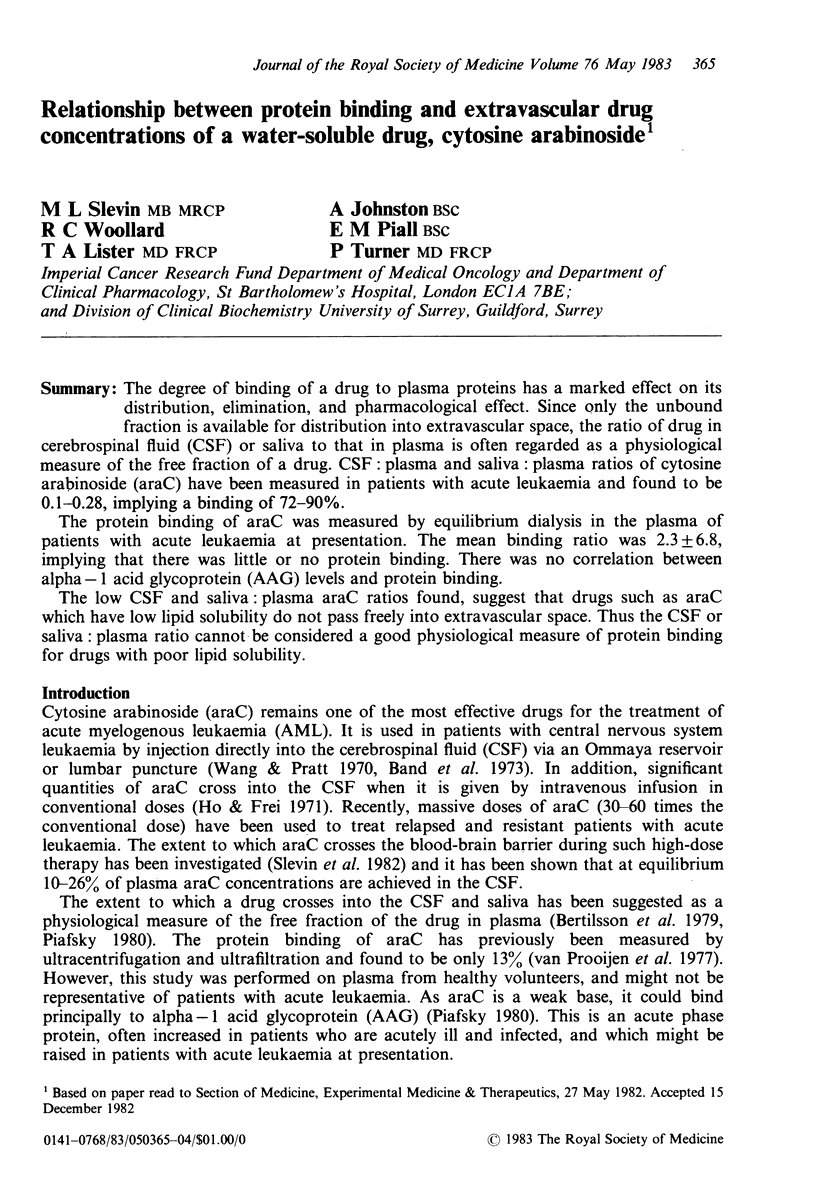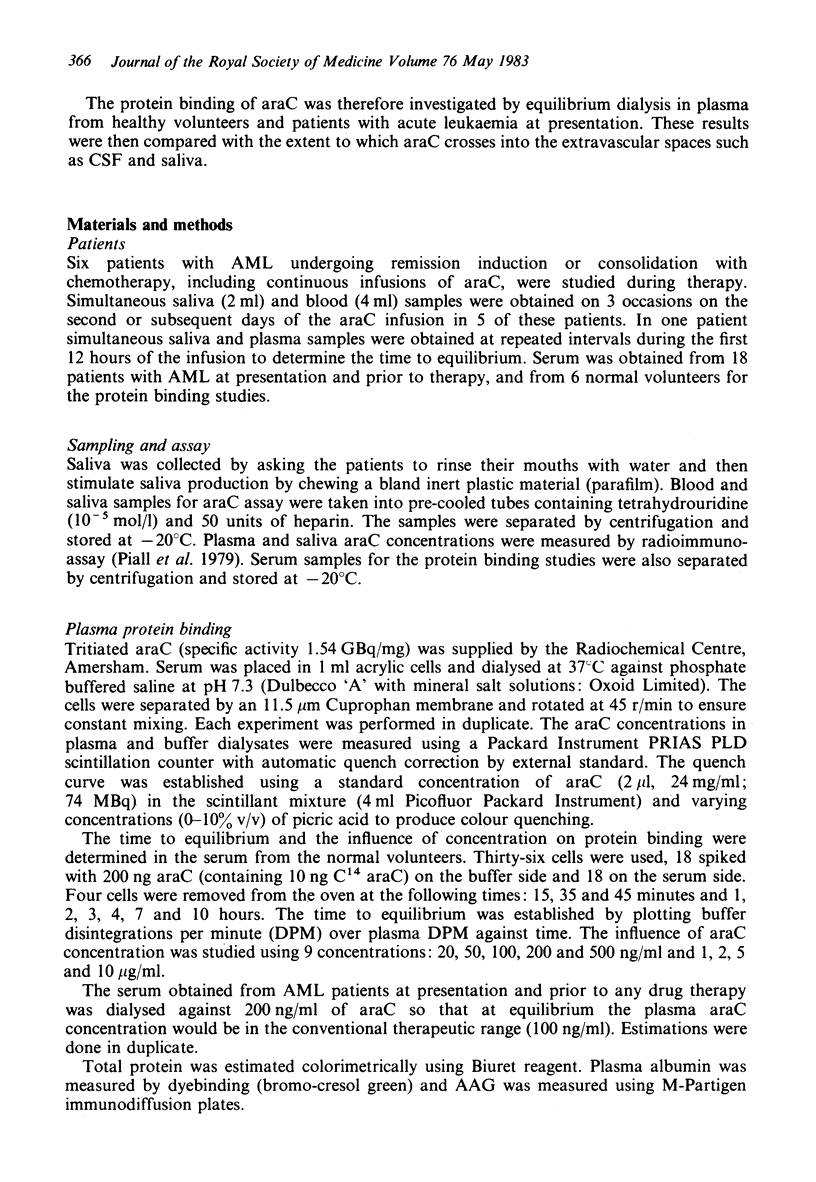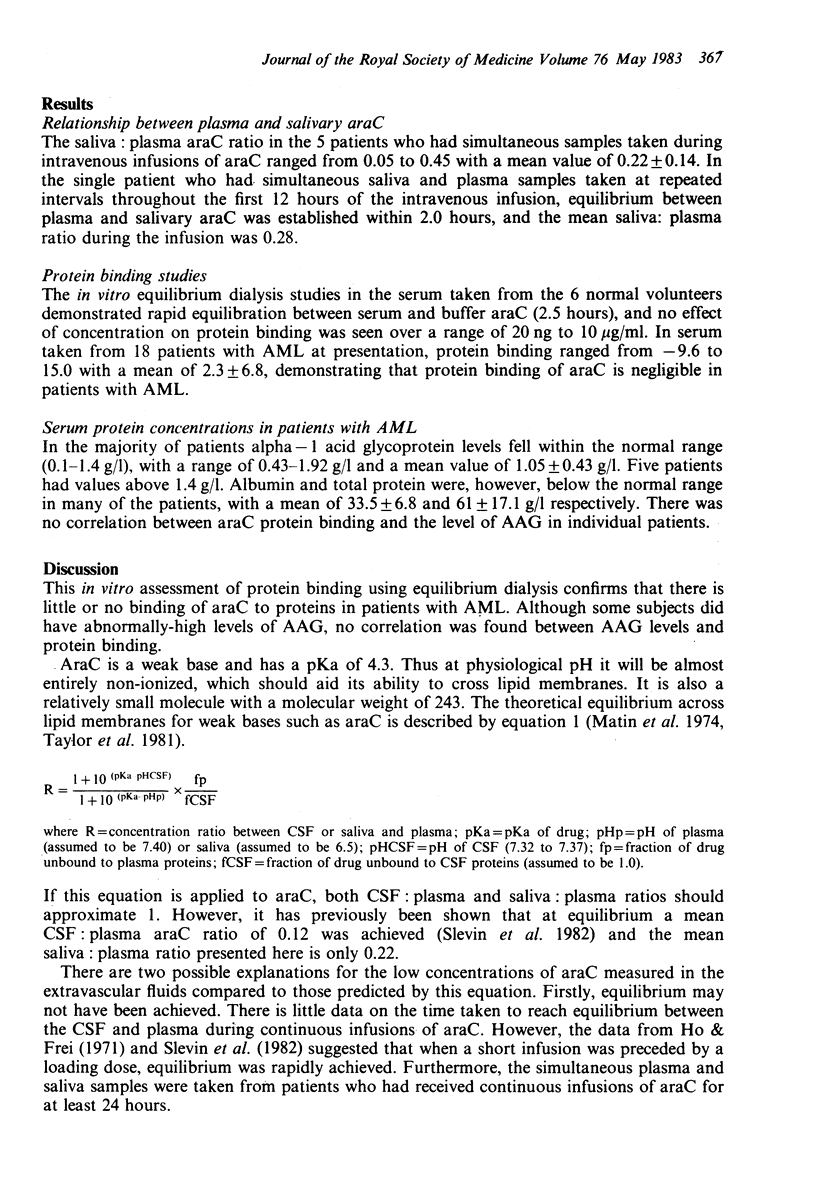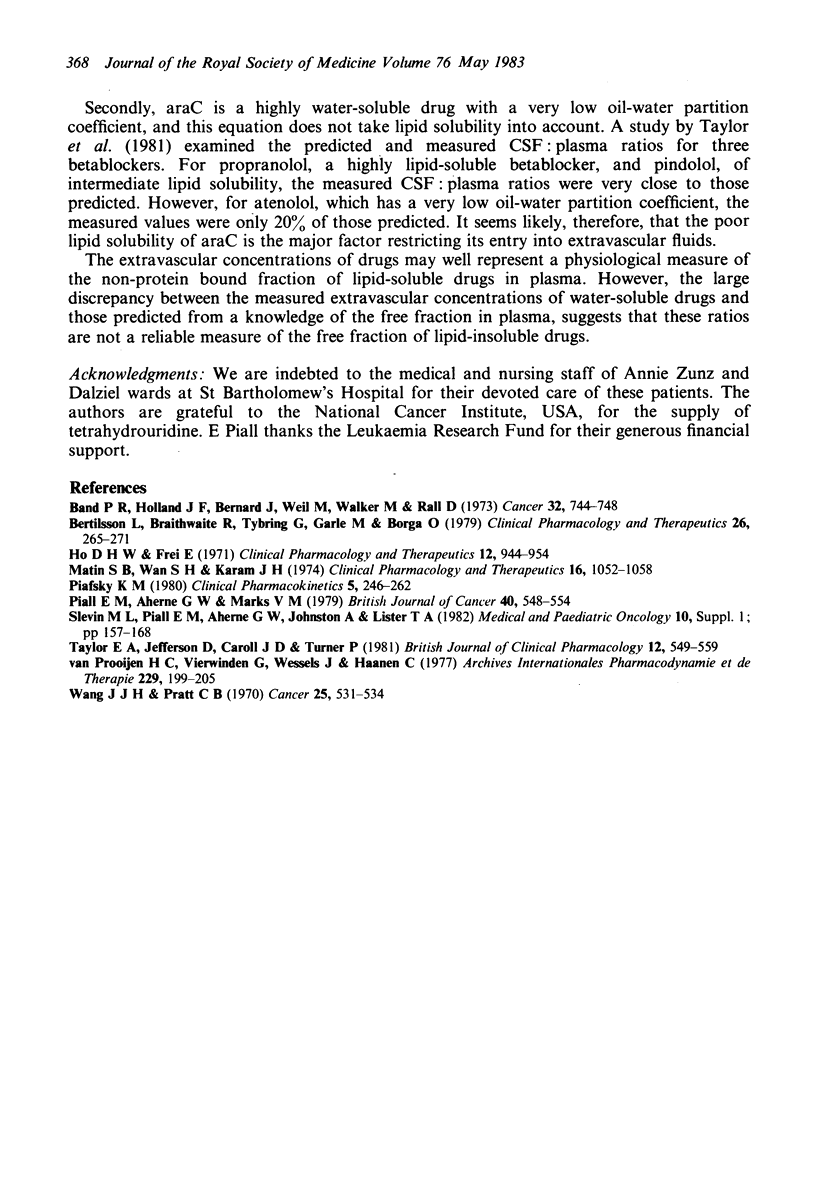Abstract
The degree of binding of a drug to plasma proteins has a marked effect on its distribution, elimination, and pharmacological effect. Since only the unbound fraction is available for distribution into extravascular space, the ratio of drug in cerebrospinal fluid (CSF) or saliva to that in plasma is often regarded as a physiological measure of the free fraction of a drug. CSF: plasma and saliva: plasma ratios of cytosine arabinoside (araC) have been measured in patients with acute leukaemia and found to be 0.1-0.28, implying a binding of 72-90%. The protein binding of araC was measured by equilibrium dialysis in the plasma of patients with acute leukaemia at presentation. The mean binding ratio was 2.3 +/- 6.8, implying that there was little or no protein binding. There was no correlation between alpha-1 acid glycoprotein (AAG) levels and protein binding. The low CSF and saliva: plasma araC ratios found, suggest that drugs such as araC which have low lipid solubility do not pass freely into extravascular space. Thus the CSF or saliva: plasma ratio cannot be considered a good physiological measure of protein binding for drugs with poor lipid solubility.
Full text
PDF



Selected References
These references are in PubMed. This may not be the complete list of references from this article.
- Band P. R., Holland J. F., Bernard J., Weil M., Walker M., Rall D. Treatment of central nervous system leukemia with intrathecal cytosine arabinoside. Cancer. 1973 Oct;32(4):744–748. doi: 10.1002/1097-0142(197310)32:4<744::aid-cncr2820320402>3.0.co;2-j. [DOI] [PubMed] [Google Scholar]
- Bertilsson L., Braithwaite R., Tybring G., Garle M., Borgå O. Techniques for plasma protein binding of demethylchlorimipramine. Clin Pharmacol Ther. 1979 Aug;26(2):265–271. doi: 10.1002/cpt1979262265. [DOI] [PubMed] [Google Scholar]
- Ho D. H., Frei E., 3rd Clinical pharmacology of 1-beta-d-arabinofuranosyl cytosine. Clin Pharmacol Ther. 1971 Nov-Dec;12(6):944–954. doi: 10.1002/cpt1971126944. [DOI] [PubMed] [Google Scholar]
- Matin S. B., Wan S. H., Karam J. H. Pharmacokinetics of tolbutamide: prediction by concentration in saliva. Clin Pharmacol Ther. 1974 Dec;16(6):1052–1058. doi: 10.1002/cpt19741661052. [DOI] [PubMed] [Google Scholar]
- Piafsky K. M. Disease-induced changes in the plasma binding of basic drugs. Clin Pharmacokinet. 1980 May-Jun;5(3):246–262. doi: 10.2165/00003088-198005030-00004. [DOI] [PubMed] [Google Scholar]
- Piall E. M., Aherne G. W., Marks V. M. A radioimmunoassay for cytosine arabinoside. Br J Cancer. 1979 Oct;40(4):548–556. doi: 10.1038/bjc.1979.220. [DOI] [PMC free article] [PubMed] [Google Scholar]
- Slevin M. L., Piall E. M., Aherne G. W., Johnston A., Lister T. A. The pharmacokinetics of cytosine arabinoside in the plasma and cerebrospinal fluid during conventional and high-dose therapy. Med Pediatr Oncol. 1982;10 (Suppl 1):157–168. doi: 10.1002/mpo.2950100715. [DOI] [PubMed] [Google Scholar]
- Taylor E. A., Jefferson D., Carroll J. D., Turner P. Cerebrospinal fluid concentrations of propranolol, pindolol and atenolol in man: evidence for central actions of beta-adrenoceptor antagonists. Br J Clin Pharmacol. 1981 Oct;12(4):549–559. doi: 10.1111/j.1365-2125.1981.tb01264.x. [DOI] [PMC free article] [PubMed] [Google Scholar]
- Wang J. J., Pratt C. B. Intrathecal arabinosyl cytosine in meningeal leukemia. Cancer. 1970 Mar;25(3):531–534. doi: 10.1002/1097-0142(197003)25:3<531::aid-cncr2820250306>3.0.co;2-g. [DOI] [PubMed] [Google Scholar]
- van Prroijen H. C., Vierwinden G., Wessels J., Haanen C. Cytosine arabinoside binding to human plasma proteins. Arch Int Pharmacodyn Ther. 1977 Oct;229(2):199–205. [PubMed] [Google Scholar]


